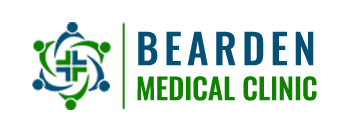Jun 30, 2023 · Patients deserve one portal to manage their own healthcare and, by extension, their complete digital health record. Let’s keep working to
https://jamanetwork.com/journals/jama/fullarticle/2807107

Are you a healthcare provider feeling overwhelmed by the constant influx of patient portal messages? You’re not alone. In this article, we’ll explore the issue of “death by patient portal” and provide practical solutions to help you manage your workload and avoid burnout.
What is “Death by Patient Portal”?
“Death by patient portal” refers to the phenomenon of healthcare providers experiencing burnout due to the excessive use of patient portals. Patient portals are online platforms that allow patients to communicate with their providers, view their medical records, and manage their appointments. While patient portals can be a convenient way to improve communication and patient engagement, they can also lead to an overwhelming number of messages and requests for providers.
Symptoms of Patient Portal Burnout
If you’re experiencing patient portal burnout, you may notice symptoms such as:
- Fatigue and exhaustion
- Difficulty concentrating
- Irritability and frustration
- Decreased job satisfaction
- Feeling overwhelmed and unable to keep up with the workload
Causes of Patient Portal Burnout
Several factors can contribute to patient portal burnout, including:
- High volume of messages: Patient portals can generate a large number of messages, which can be difficult to manage, especially during peak hours.
- Urgent requests: Patients may use the patient portal to send urgent requests, which can add to the stress of managing the workload.
- Lack of boundaries: Patients may not always understand the appropriate use of the patient portal, leading to non-urgent requests or messages outside of business hours.
Solutions to Patient Portal Burnout
To avoid burnout, healthcare providers can implement several strategies:
- Set boundaries: Clearly communicate to patients the appropriate use of the patient portal and establish guidelines for message frequency and urgency.
- Triage messages: Prioritize messages based on urgency and importance, and respond to urgent requests first.
- Use technology: Utilize tools such as automated messaging or patient triage systems to manage the volume of messages.
- Delegate tasks: Consider delegating non-urgent tasks, such as medication refills or appointment scheduling, to support staff.
- Take breaks: Schedule regular breaks throughout the day to avoid burnout and maintain focus.
Patient Portal Usage Guidelines
To help healthcare providers manage patient portal usage, patients can follow these guidelines:
- Use the patient portal for non-urgent requests: Contact your provider directly for urgent matters or medical emergencies.
- Be concise and clear: Keep your messages brief and to the point, providing only the necessary information.
- Respect business hours: Avoid sending messages outside of normal business hours unless it’s an urgent matter.
- Understand the purpose of the patient portal: Use the patient portal for its intended purpose, such as viewing medical records, managing appointments, or sending non-urgent messages.
Conclusion
Patient portals can be a valuable tool for improving patient care, but it’s important to manage their use effectively to avoid burnout. By implementing the strategies outlined in this article, healthcare providers can reduce the burden of patient portal messages and maintain a healthy work-life balance. Patients can also contribute to this effort by following the usage guidelines and using the patient portal appropriately.
Patient Portal Links
FAQ
What are the benefits disadvantages and problems that can occur from using a patient portal?
What is a patient portal list 5 things a patient can do on the portal?
What is a patient portal system?
Are patient portal messages part of the medical record?
Read More :
https://pubmed.ncbi.nlm.nih.gov/37389857/
